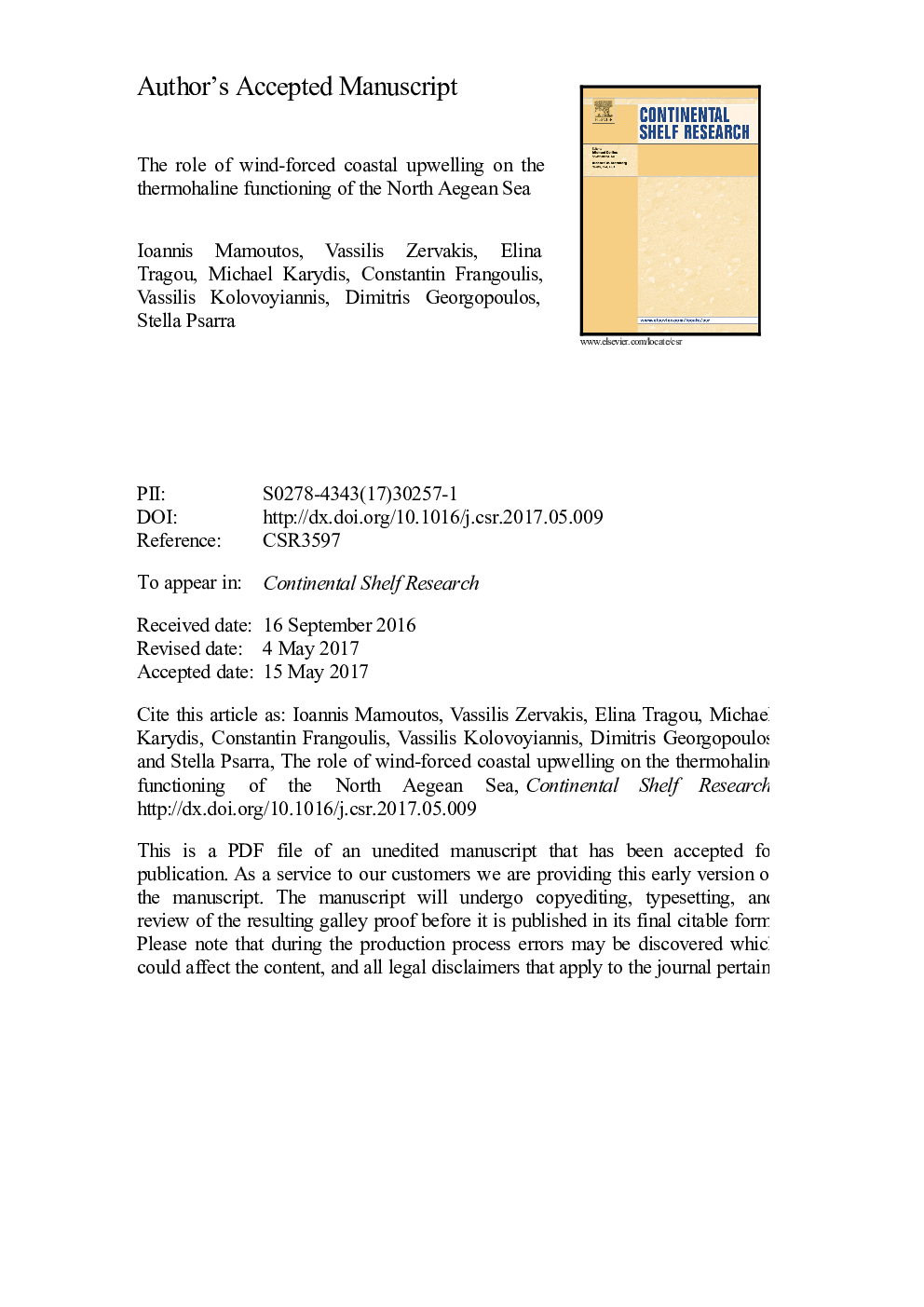| Article ID | Journal | Published Year | Pages | File Type |
|---|---|---|---|---|
| 8884155 | Continental Shelf Research | 2017 | 45 Pages |
Abstract
This work examines the impact of coastal upwelling on the exchanges of a semi-enclosed basin with the open sea. Five oceanographic transects were performed with a cross-shore direction relative to the western coast of Lesvos island of the eastern Aegean Sea, a region where coastal upwelling is regularly observed during the summer Etesian northerly winds. Filaments of highly saline water were observed during upwelling incidents, and were attributed to the enhanced transport of Levantine water from the south due to the baroclinic response to upwelling. All our observations, as well as a 9-year hindcast of the phenomenon revealed that the origin of the upwelled isopycnals usually remained above 40Â m depth, and never exceeded the depth of 60Â m. On the contrary, the isopycnals hosting the nutricline appear to downwell during upwelling incidents. Our hindcast showed that the secondary geostrophic circulation is comprised both by surface and subsurface longshore currents, which affect the meridional exchanges at the surface and intermediate layers and reduce the residence time of the water in the basin. We conclude that coastal upwelling in a region with longshore temperature and salinity gradients can modify the transport of salt and heat along the coast, possibly affecting the thermohaline functioning of a basin.
Keywords
Related Topics
Physical Sciences and Engineering
Earth and Planetary Sciences
Geology
Authors
Ioannis Mamoutos, Vassilis Zervakis, Elina Tragou, Michael Karydis, Constantin Frangoulis, Vassilis Kolovoyiannis, Dimitris Georgopoulos, Stella Psarra,
